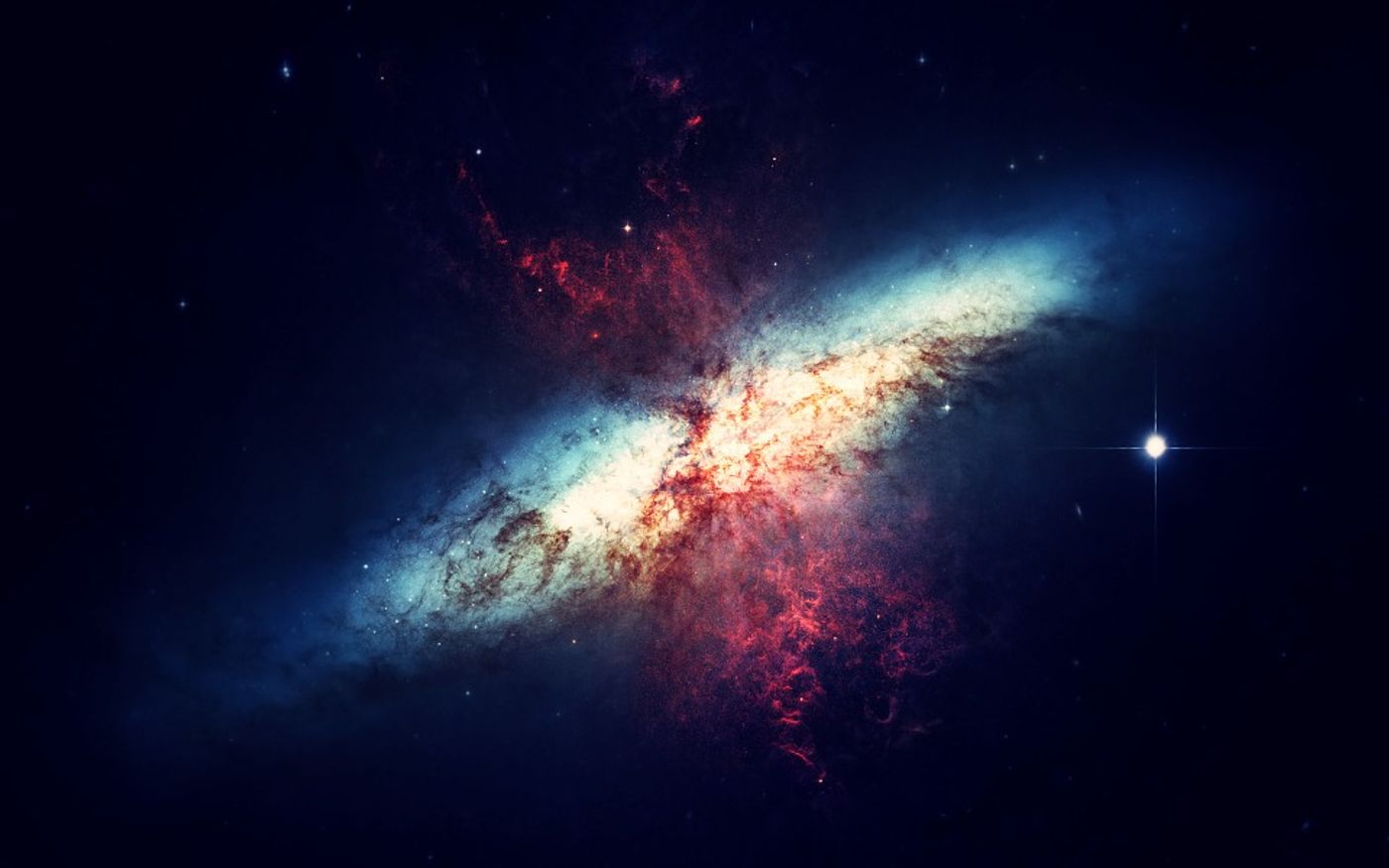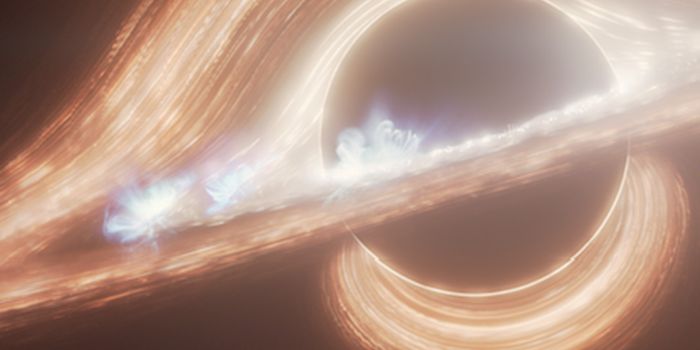Researchers observe streams of cold gas needed for early-universe galaxies
Researchers from the University of Iowa describe breakthrough observations of streams of cold gas that they say could have been the source of energies needed for early super-sized galaxies to grow. While physicists have long known that galaxies require large amounts of cold gases to experience gravitational collapse during their formation, it has been of hot debate where such a large supply of cold gases came from during the early universe.
The study, titled, "A long stream of metal-poor cool gas around a massive starburst galaxy at Z=2.67," was published online in the Astrophysical Journal today and aims to address a theory developed by physicists roughly twenty years ago. The theory described how narrow cosmic filaments transported cold gas and young galaxies to a dark matter halo, where it all jumbled together to produce massive galaxies.
Now, using the Atacama Large Millimeter/Submillimeter Array, the University of Iowa researchers have taken observations of a gaseous region around a massive galaxy from when the universe was a young 2.5 billion years old. Their observations reveal the galaxy’s environmental conditions and speak to the presence of cold gases.
"It is the prototype, the first case where we detected a halo-scale stream that is feeding a very massive galaxy," says lead study author Hai Fu, who is also an associate professor in Iowa's Department of Physics and Astronomy. "Based on our observations, such streams can fill up the reservoir in about a billion years, which is far shorter than the amount of time that was available to the galaxy at the epoch that we were observing."
The researchers also observed two background quasars, that, due to their configuration, allowed the researchers to confirm the presence of a narrow stream of cold gas. The team was able to determine the chemical composition of the gas, noting that it contained a low concentration of heavy elements such as aluminum, carbon, iron, and magnesium, which implied that the gas must be coming in from outside of the galaxy, not being emitted from it.
"Among the 70,000 starburst galaxies in our survey, this is the only one associated with two quasars that are both nearby enough to probe the halo gas. Even more, both quasars are projected on the same side of the galaxy so that their light can be blocked by the same stream at two different angular distances." Fu says. "So, I feel extremely fortunate that nature provided us this opportunity to detect this major artery leading to the heart of a phenomenal galaxy during its adolescence."
Sources: Astrophysical Journal, Eureka Alert









